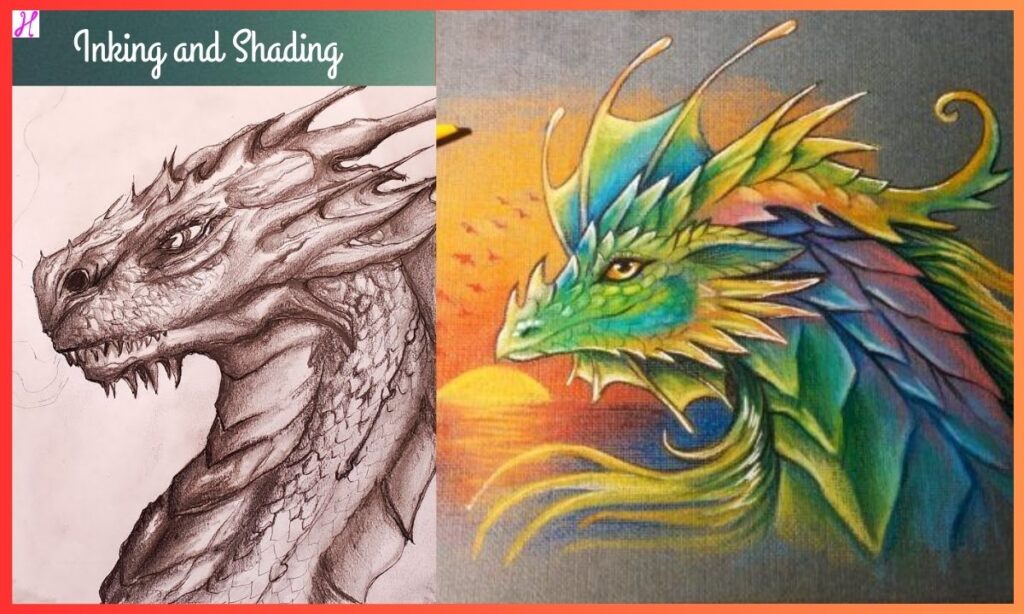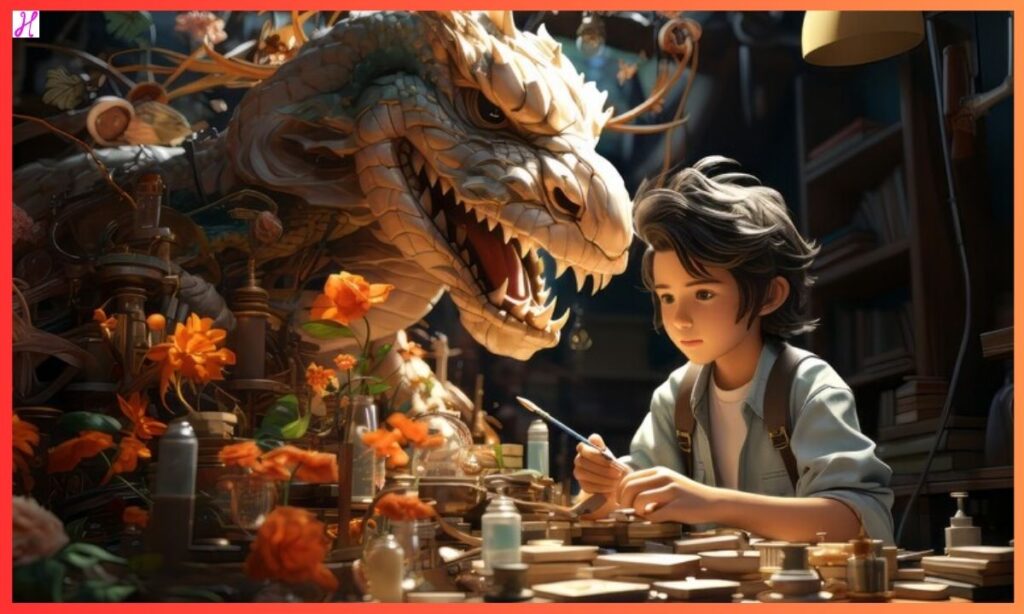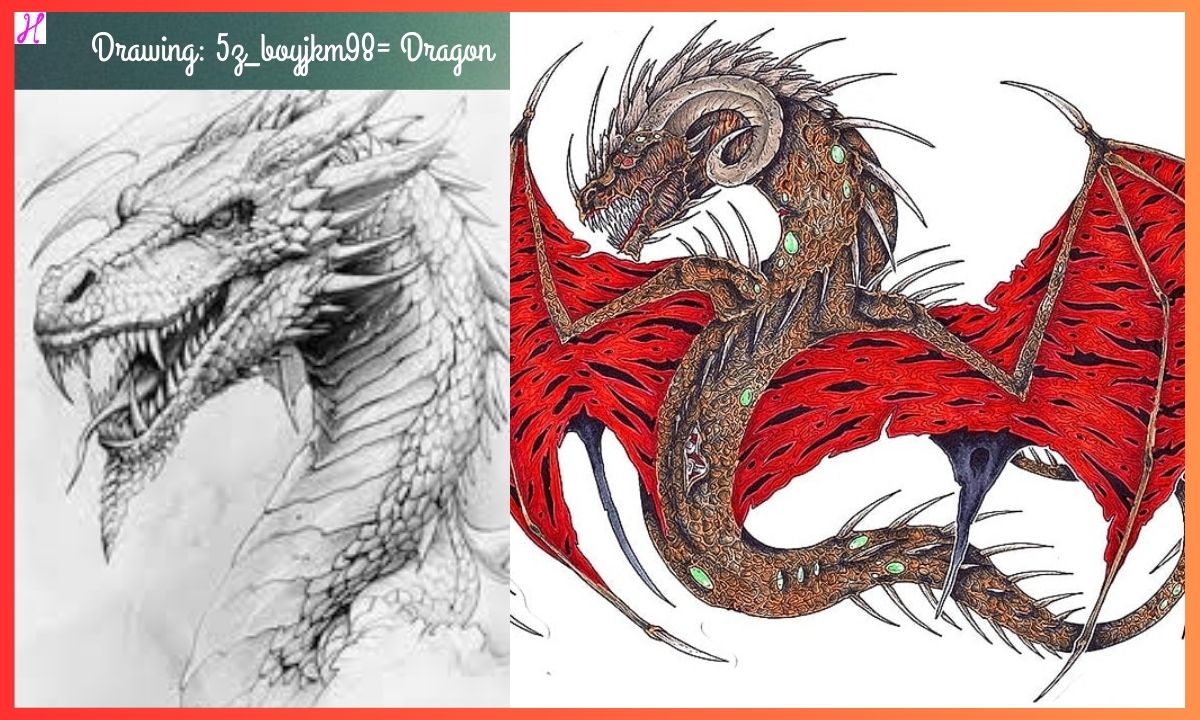Drawing: 5z_boyjkm98= dragon has captivated artists and enthusiasts for centuries. These mythical creatures embody a blend of fearsome power and majestic beauty, making them a popular subject in art.
Thank you for reading this post, don't forget to subscribe!In this article, we’ll delve into the techniques and tips for drawing dragons, inspired by the code “Mastering dragon drawing involves a combination of understanding anatomy, experimenting with poses and features,” which symbolizes the fusion of creativity and technique.
Exploring the Making of drawing:5z_boyjkm98= Dragon
Understanding Dragon Anatomy
Before you start Drawing: 5z_boyjkm98= Dragon, it’s essential to understand its anatomy. Dragons often feature a combination of reptilian and avian traits. Key components include the head, body, wings, and tail.
The head is typically fierce and elongated, with sharp eyes and prominent horns. The body can be serpentine or more robust, depending on the dragon’s type.
Most dragons are depicted with large, bat-like wings that are crucial for their flying ability. The tail can be long and sinuous or more rigid, often ending in a spiked or flared tip.
Sketching the Basic Shapes
Start with basic shapes to form the dragon’s body. Use circles and ovals to outline the head, torso, and limbs. Sketch lines for the spine and tail to guide the overall posture.
Begin with the head and neck, drawing a circle for the head and a line for the neck. Position the circle at the end of the line where you want the dragon’s head to be.
Add an elongated oval or rectangle for the body and connect it to the head with a curved line. Sketch the limbs using lines and shapes, and draw the wing structure using curved lines.
Adding Details
Once the basic shapes are in place, refine your drawing with details. Add features such as eyes, nostrils, and a mouth to the face, including details like teeth and horns for a more intimidating look.
Draw scales by adding small, overlapping semi-circles or diamonds over the body, and include sharp claws on the feet and spikes along the back for added texture.
Wing Structure and Anatomy
The wings are a critical component of a dragon’s anatomy. When drawing the wings, focus on their structure and how they connect to the body.
Pay attention to the segmentation, veins, and the overall shape and curvature of the wings to give them a realistic appearance.
Inking and Shading
After refining your pencil sketch, use ink to outline the final drawing. This step will make your dragon stand out and prepare it for coloring.

Carefully trace over your pencil lines with a fine pen or marker, capturing all the details you’ve added.
Next, use shading techniques to add depth and dimension. Consider where the light source is coming from and apply darker shades where shadows would naturally fall.
Coloring Your Dragon
Coloring your dragon can bring it to life. Choose colors that match your vision for the dragon—vivid reds, deep blues, or metallic golds are popular choices.
Start with a base color for the body and wings, then add darker shades for areas where shadows fall and lighter shades or highlights where the light hits the dragon.
Final Touches
Review your drawing for any final adjustments. Add any last-minute details or corrections to perfect your dragon.
Must read This Article:Wallpaper:3bvdf Church= Christmas, Choose Benefits, Installation & More
Advanced Techniques for Dragon Drawing
1. Dynamic Poses: To make your dragon Drawing: 5z_boyjkm98= Dragon more dynamic, experiment with different poses and angles.
Dragons can be depicted in various actions such as flying, coiling, or breathing fire. Use lines to indicate movement and energy, and apply perspective techniques to create a sense of depth.
2. Textures and Patterns: Adding textures and patterns can bring your dragon to life. Experiment with different scale patterns, from smooth to rough or diamond-shaped.
You can also explore a dragon with skin instead of scales, creating a unique and visually interesting appearance.
3. Special Features: Dragons can have a variety of unique features that set them apart.
Play with different shapes and sizes for horns and antlers, and if your dragon breathes fire or ice, use dynamic brush strokes or shading to depict these elements.
4. Background Elements: A well-drawn dragon often looks more impressive with a suitable background.
Place your dragon in a fitting environment, such as a mountain range, ancient ruins, or a fiery landscape, to add context and enhance the overall composition. Use atmospheric effects like mist, smoke, or stars to set the mood.
5. Color Blending and Highlights: For a more polished look, use blending techniques and highlights.
Blend colors smoothly to create a natural transition between shades, and add highlights to areas where light hits directly to make the dragon’s scales or wings appear more three-dimensional.
6. Digital Tools: If you’re using digital tools, explore various brushes and effects to enhance your dragon drawing.
Use different brushes for textures and effects, and utilize layers to separate different elements of your drawing for easier adjustments and experimentation.
Practice and Inspiration

Drawing:5z_boyjkm98= dragon can be challenging, so regular practice is key. Look for inspiration in the following sources:
Mythology and Fantasy Art
Study dragons in mythology, fantasy novels, and artwork to understand different styles and interpretations. Analyzing how other artists have depicted these mythical creatures can provide valuable insights and inspiration.
Also Read This Blog:Kelly Bates Asks Supporters Not to Take Out Their Anger On NBC 10: A Story of Grace Under Pressure
Art Communities
Join art forums or communities to share your work and receive feedback from other artists. This can provide valuable insights and new ideas to enhance your dragon drawing skills.
Conclusion
Mastering dragon Drawing: 5z_boyjkm98= Dragon involves a combination of understanding anatomy, experimenting with poses and features, and applying advanced techniques.
By integrating these elements, you can create a dragon that is not only visually striking but also imbued with personality and life.
Whether you’re drawing a fierce, fire-breathing dragon or a graceful, winged creature, your unique touch will make the artwork truly your own. Happy drawing!
FAQ’s
What are the key components of dragon anatomy?
The key components of dragon anatomy include the head, body, wings, and tail. Dragons often feature a combination of reptilian and avian traits.
How do I start sketching a dragon?
Start with basic shapes like circles and ovals to outline the head, torso, and limbs. Sketch lines for the spine and tail to guide the overall posture.
What are some advanced techniques for adding details to a dragon drawing?
Advanced techniques include experimenting with dynamic poses, textures and patterns, special features (like horns and fire/ice effects), and incorporating background elements.
How can I use digital tools to enhance my dragon drawings?
Digital tools allow you to explore various brushes and effects, as well as utilize layers to separate different elements of your drawing for easier adjustments and experimentation.
Where can I find inspiration for drawing dragons?
Look to mythology, fantasy art, and online art communities to study different styles and interpretations of dragons.




